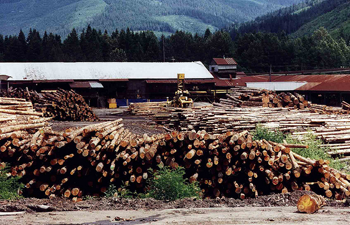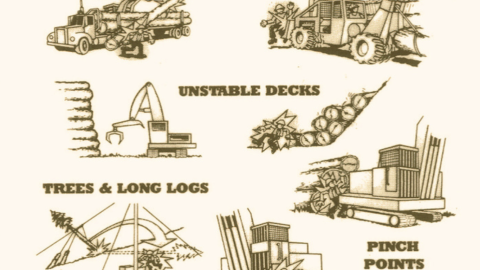
The forestry sector is among the top ten manufacturing employers in the US, and yet logging work is among the three most dangerous. Logging involves exposures to a wide variety of hazards, including: work in close proximity to heavy equipment and trucks; tree falls, log movements and falling objects; ergonomic issues; hand-arm and whole-body vibration; noise; and, environmental factors. The fatality rate for loggers recently averaged 84 deaths per 100,000 workers. This represents a steady decline in fatalities yet is still 23 times greater than the overall US rate. Washington and Oregon represent about 20% of total US logging employment.
Logging is characterized by small businesses, comprising only 0.5% of all US employment, but accounts for 2% of all workplace fatalities. Smaller logging contractors have mortality risks ten times higher than larger firms. Injuries are also very common in logging. Learn more in this US Bureau of Labor Statistics' Beyond the Numbers article on logging.
The logging sector has emerged from the recession with a workforce substantially reduced in numbers and skills. Increased mechanization of logging is changing the nature of the hazards and is generally safer, yet there is a need to support a new workforce with the skills and knowledge to stay safe. Our forestry and logging research priorities are developed with the participation of logging stakeholders.
Selected Publications
Forestry - Integrating Safety in a Time of Rapid Change, Harrington 2021
Accident Analysis in Forestry: A practical field guide, Garland 2018
Occupational Safety and Health in Forest Harvesting and Silviculture, Garland 2020
Oregon Logging Accidents: Ten Years of Data, Fifty Years of Perspective, COFE, Garland 2024
What NW Loggers Say will Improve Safety and Health, COFE, Harrington 2024



